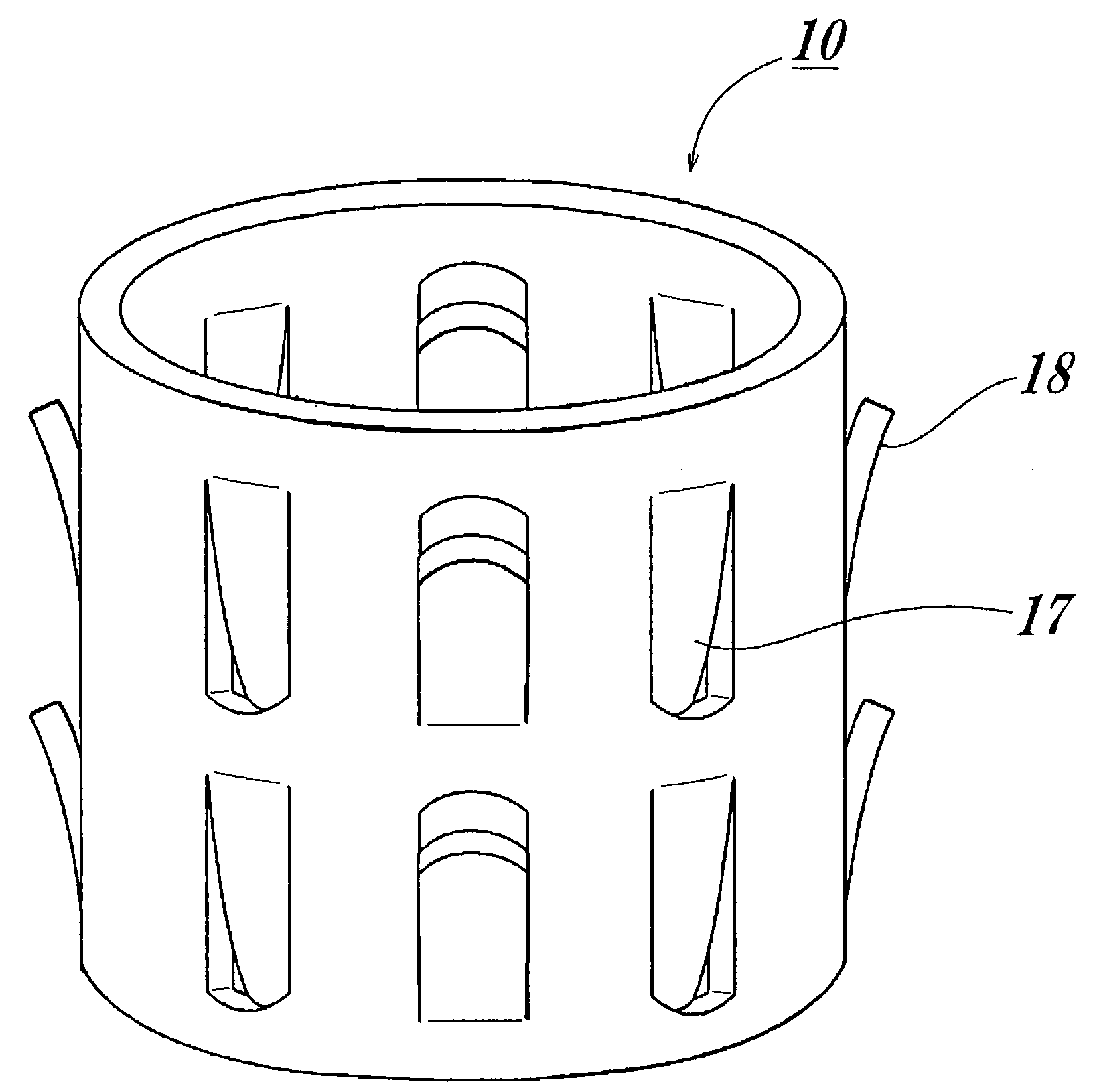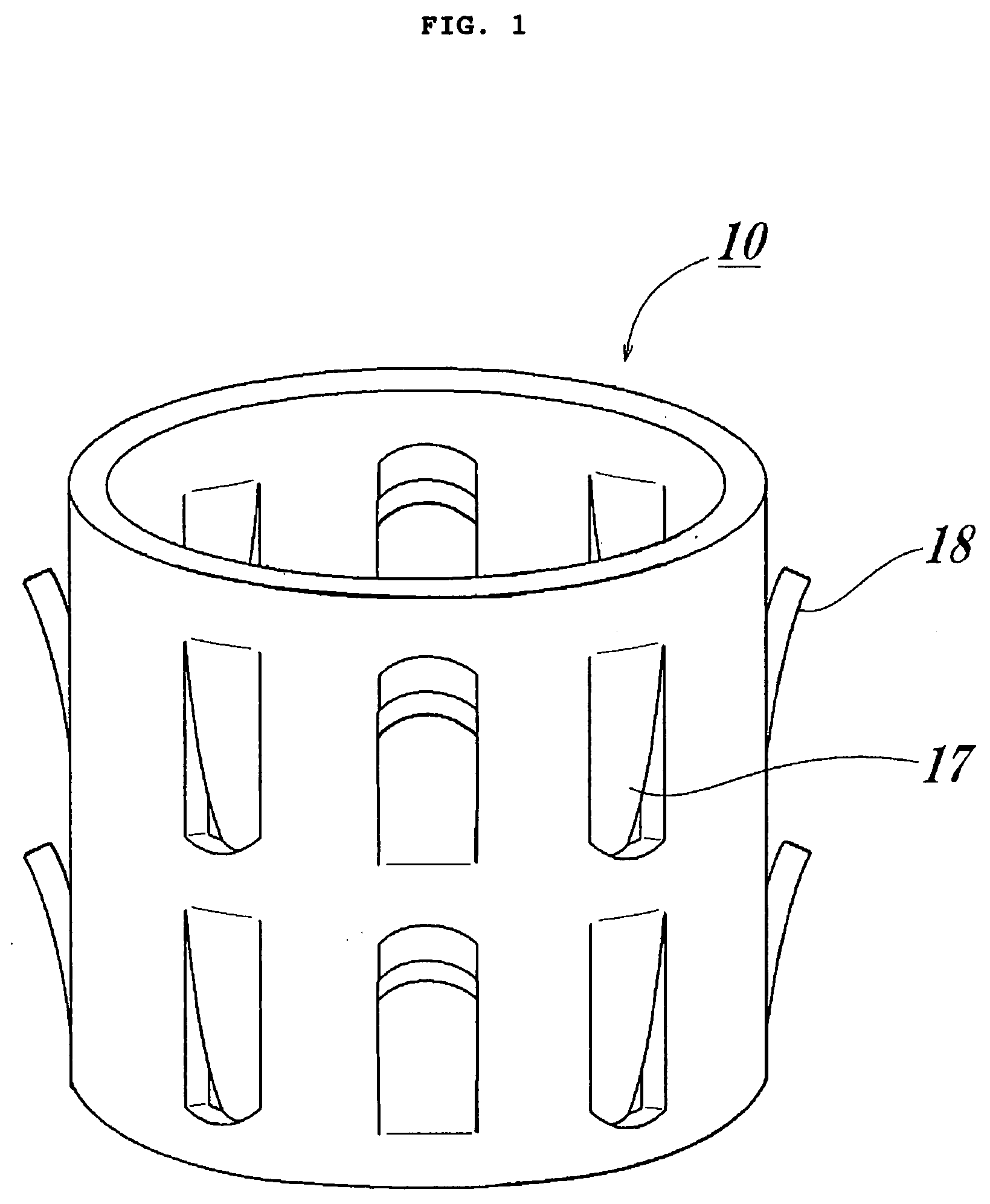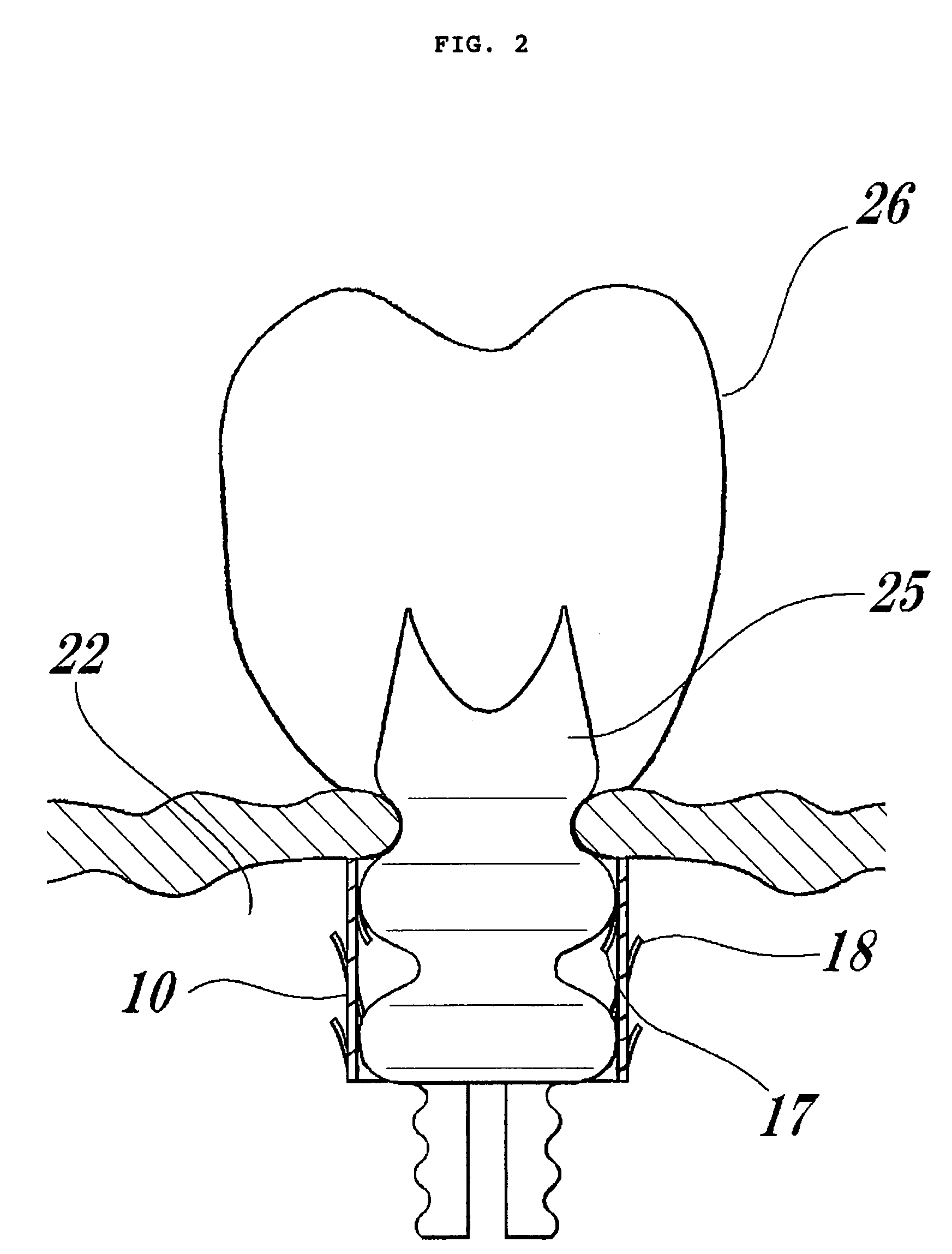Artificial socket bone
a technology of artificial teeth and sockets, applied in the field of artificial teeth, can solve the problems of unstable artificial teeth root, inability to complete the formation of alveolar bone proper (socket bone) a and bone trabeculae b, and insufficient stability of artificial teeth root, so as to achieve rapid bone tissue creation and stable implanting
- Summary
- Abstract
- Description
- Claims
- Application Information
AI Technical Summary
Benefits of technology
Problems solved by technology
Method used
Image
Examples
embodiment 1
[0042]An artificial socket bone 10 according to the present embodiment, illustrated in FIG. 1, is formed to a cylindrical tubular shape having plural cuts made in the cylindrical tubular surface thereof, with protrusions 17 and 18 being formed as a result of such cuts. These protrusions include protrusions 17 protruding into the artificial socket bone and protrusions 18 bending out of the artificial socket bone.
[0043]The above plural cuts are provided equidistantly along the peripheral face of the cylindrical tube, and are arrayed equidistantly also in the axial direction. There are eight rows of protrusions spaced apart in the peripheral face direction. The protrusions 17 of cuts in some rows curve into the artificial socket bone 10, while the protrusions 18 of cuts, in rows adjacent to the former, curve out of the artificial socket bone.
[0044]The artificial socket bone fits into an implant hole for dental roots opened in the jawbone. Herein, the protrusions 18 of the artificial so...
embodiment 2
[0049]As illustrated in FIG. 3, an artificial socket bone 30 according to the present embodiment is formed in a cylindrical tubular shape having plural cuts made in the cylindrical tubular surface thereof, with protrusions 37 and 38 being formed from such cuts. These protrusions include protrusions 37 protruding into the artificial socket bone and protrusions 38 bending out of the artificial socket bone.
[0050]The above plural cuts are provided equidistantly along the peripheral face of the tube, and are arrayed equidistantly also in the axial direction. There are eight rows of protrusions spaced apart in the peripheral face direction. The protrusions 37 of cuts in some rows curve into the artificial socket bone 30, while the protrusions 38 of cuts, in a row or rows adjacent to the former, curve out of the artificial socket bone.
[0051]Moreover, the artificial socket bone according to Embodiment 2 comprises through-holes 35 wherein part of the above cuts have no protrusions, such that...
embodiment 3
[0060]FIG. 5A and FIG. 5B show two embodiments, each showing a single sheet of a plate material 50 or 51 used in the artificial socket bone according to the present invention. A titanium alloy can be used herein as the plate material. As illustrated in FIGS. 5A and 5B, the cuts are formed in the plate material pointing alternately up and down.
[0061]The cuts 55 in the plate material 50 illustrated in FIG. 5A are substantially rectangular and have ends 54 that are punched to a circular shape. The plate material 50 may also be shaped as illustrated in FIG. 5B. The cuts 57 in the plate material 51 illustrated in FIG. 5B are substantially rectangular and have ends 58 that are configured to a deformed elliptical shape. These cuts 55, 57 and the ends 54, 58 are curved inwards or outwards to yield the protrusions of the present invention.
[0062]Also, forming through-holes by cutting from the upper or lower side with determined spacings along the axial direction of the tube allows distributin...
PUM
 Login to View More
Login to View More Abstract
Description
Claims
Application Information
 Login to View More
Login to View More - R&D
- Intellectual Property
- Life Sciences
- Materials
- Tech Scout
- Unparalleled Data Quality
- Higher Quality Content
- 60% Fewer Hallucinations
Browse by: Latest US Patents, China's latest patents, Technical Efficacy Thesaurus, Application Domain, Technology Topic, Popular Technical Reports.
© 2025 PatSnap. All rights reserved.Legal|Privacy policy|Modern Slavery Act Transparency Statement|Sitemap|About US| Contact US: help@patsnap.com



